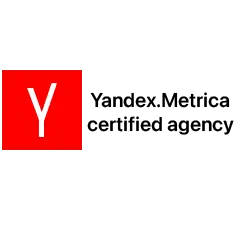In 2023, around 5.5 million new businesses were registered. Many of them could not make it big enough to survive. Likewise, potential customers were not even aware of many new businesses because of a lack of business visibility. It plays a crucial role in attracting potential customers, and here comes SEO into the picture.
Marketers use SEO to enhance reach on different platforms where potential customers hang out. Google and YouTube are the two most popular and widely used search engines for which SEO is studied.
Initially, businesses used to do SEO for the Google search engine, now called traditional SEO. Since YouTube has gained pace and attracted billions of people, YouTube SEO has become crucial for content marketers. But now the question is, which is the best to follow in 2025: YouTube SEO or Traditional SEO?
Understanding their differences will help you decide which to use to enhance your business’s visibility. Let’s dig into the information in this blog.
What Is YouTube SEO?
YouTube SEO is optimizing videos to rank them higher in YouTube search results. However, it’s not limited to YouTube because people also search for videos on search engines. So, YouTube’s search engine optimization practice includes optimizing videos for both YouTube and search engines (Popularly Google).
Using the power of SEO, you can make your videos more searchable. However, SEO requires strategies and techniques to make a video worthy of ranking in search results.
How Does YouTube SEO Work?
When you focus only on YouTube SEO, you realize it differs from traditional SEO. YouTube SEO works on algorithms that use metrics like views, watch time, viewer retention, engagement, and others. The optimization starts with keyword research. It helps you know what exactly your viewers want to see.
YouTube personalizes video recommendations based on three main metrics:
- Video Performance:
Data about video performance, viewer engagement, and view duration help YouTube algorithms to rank a video.
- User Watch History:
Data about user watch history and viewers’ interaction with videos determines which videos should appear in the viewer’s feed. It is an effective metric for recommendation personalization.
- Topical Interest:
YouTube analytics consider a video’s relevance to the specific topic when ranking it. Videos that resonate with the audience’s interest are highly considered.
What Is Traditional SEO?
Traditional SEO focuses on optimizing web pages and improving the site’s national and global visibility. It’s different from local SEO, which optimizes web pages for local research results. Moreover, it differs from YouTube SEO because videos are optimized instead of text content.
Traditional SEO mainly includes on-page optimization for meta tags, headings, descriptions, and keyword placement in the content. Off-page SEO and Technical SEO also play crucial roles in traditional SEO practices. Small businesses mainly use traditional SEO to improve organic traffic on their websites.
Three main factors of traditional SEO to rank a page:
- Content Quality:
According to Google, quality content is helpful, reliable, and people-first. Traditional SEO focuses on these qualities for ranking a page.
- Backlinks:
Inbound links help enhance a website’s authority. Authoritative websites are trustable, which is a crucial factor in ranking in SERPs.
- Technical SEO:
Since Google began prioritizing user experience and website structure, marketers have considered technical SEO an essential method for ranking websites.
Difference Between YouTube SEO and Traditional SEO
The key factors distinguishing YouTube SEO from Traditional SEO are in the space below. Understanding the difference will help you clear your confusion.
- Algorithm Differences:
Algorithm differences between YouTube SEO and Traditional SEO play a major role in understanding which method benefits your business the most.
YouTube SEO:
YouTube’s algorithms prioritize watch time, viewer engagement, video title, description, share, comment, and like, as well as the quality of the content and channel authority. Whatever your viewers have watched in the past, and the type of content they like also matter when ranking a video in the YouTube search results.
According to research by Statista, YouTube users spend approximately 29 hours watching the mobile app in a month.
Traditional SEO:
Traditional SEO focuses on algorithms like content relevance, quality, backlinks, site authority, meta title, website structure, and user experience. So, algorithms mainly focus on text-based content quality, website, and backlinks to rank pages in Google SERPs.
As per Backlinko, 99% of people click on pages raking at the top in Google SERPs.
- Target Audience Differences:
Some people like to read to gain information or learn something new, while others prefer to watch videos. If you understand your audience better, it will be easy to figure out whether to focus on YouTube SEO or Google SEO.
YouTube SEO:
Audiences who want to learn through visuals and watch entertaining videos and tutorials go for YouTube. People use YouTube to understand the functionality of gadgets, decide on the house’s interior, watch movie trailers, and so on. Additionally, the platform creates an easy emotional connection as you can watch people.
Traditional SEO:
People seeking text-based information choose the Google search engine. They like to consume information in words. They look for articles, blogs, PDFs, and e-commerce products. Moreover, researchers, professionals, and businesses looking for in-depth reports, guides, and theses use text-based platforms.
- Difference in Keyword Research:
When people want to watch something, what keyword do they search with? Similarly, when they want to read something, how do they search? Yes, there is a difference in the queries people search with on Google and YouTube.
YouTube SEO:
It involves keywords people use to search for videos, such as “How to make a chocolate cake,” “DIY home decor ideas,” “Travel vlogs in Europe,” “Learn guitar for beginners,” and “Make tips for sensitive skin.” Videos are the best way to answer all these user queries effectively.
YouTube is the second most visited website, with around 2.50 billion monthly users (CNET).
Traditional SEO:
In Traditional SEO, you have to focus on keywords that people specifically use to read something. With the help of the Google Keyword Planner, you can find the types of queries people use for online searching. Here are some examples, “How to write a business plan,” “What are the benefits of meditation,” and “Best restaurant near me.”
Businesses can earn up to 30% CTR by appearing in the no. 1 position in Google search results.
- Difference in Engagement Metrics:
How audiences interact with your content reveals whether you are offering quality content. YouTube’s engagement metrics differ from Google’s; let’s know how much.
YouTube SEO:
How many likes, views, comments, and shares a video achieves shows people’s engagement with the video. Watch time and subscriptions also directly impact a video’s ranking. By working on these metrics, you can make your video engaging.
Traditional SEO:
In traditional SEO, metrics like time spent on the site, bounce rate, page views, organic traffic, conversion rate, CTR, and organic visibility show insights about your pages’ engagement. You can use tools to track and measure these metrics and analyze whether to change strategy or platform.
- Video and Text Content Differences:
This is the obvious difference between YouTube SEO and Google SEO. To rank on YouTube, you need to focus on videos; to rank on Google, SERPs focus on text-based content.
YouTube SEO:
YouTube SEO concentrates on optimizing video content, including titles, thumbnails, and descriptions. These are crucial for attracting viewers and helping YouTube algorithms to rank your video.
Traditional SEO:
It focuses on blog posts, web pages, and other text-based content, including title, headings, keyword stuffing, density, and description. Content writers can rank their content by focusing on these areas with content quality.
- Click Through Rate Variations:
The click-through rate helps you understand whether your content is performing well. However, CTR analysis metrics differ for YouTube SEO and Traditional SEO; let’s learn about them.
YouTube SEO:
Compelling titles and thumbnails attract more viewers and enhance CTR on YouTube. If you give enough time and effort to creating engaging titles, you will see an increase in CTR rate. Moreover, how often your video appears in recommendations also affects CTR.
Traditional SEO:
Meta titles and descriptions affect CRT in text-based content. Well-crafted snippets and FAQs also drive people to click on the link. With the help of the CTR rate, you can understand how many people viewed and actually clicked on your content.
- Difference in Ranking Factors:
What factors determine the rank of a video and a blog? The factors for both types of content differ little.
YouTube SEO:
Video engagement, audience retention, and several social media shares help rank a video. To enhance engagement, create a high-quality video focusing on topical interest, audience interest, and unique topic ideas, and follow an effective presentation.
Traditional SEO:
On-page SEO, backlinks, site speed, mobile-friendliness, title, meta title, and description. Overall, creating high-quality content considers all these factors. Using relevant keywords to rank different search queries also affects ranking. Moreover, easy, clean, and concise content attracts more views on a blog, which is crucial for ranking.
- Analytics and Tools:
Many tools make it easy to analyze the performance of videos and pages. You can use better strategies to rank your content with the help of data insights.
YouTube SEO:
YouTube analytics is a widely used tool for checking the performance of videos and channels as a whole. You can also use TubeBuddy, VidIQ, and Social Blade to analyze YouTube videos’ performance. Track channel growth, subscriber count, and video statistics over time.
Traditional SEO:
Google Analytics, Google Search Console, Semrush, Ahref, and Moz are effective tools for checking website traffic, conversion rate, indexing status, keyword ranking, site audits, and link analysis.
Comparing YouTube SEO and Traditional SEO: A Quick Table
| Factor | YouTube SEO | Traditional SEO |
| Algorithms | Prioritizes watch time, views, shares, likes, comments, content quality | Focuses on backlinks, site authority, meta title, and website structure. |
| Target Audience | Visual learners seeking tutorials and entertainment | Readers looking for text-based information and in-depth reports |
| Keyword Research | Searches for video-specific keywords (e.g., “how to…”) | Focuses on text-oriented keywords (e.g., “best restaurants”) |
| Engagement metrics | Likes, views, comments, watch time, subscriptions | Bounce rate, time on site, page views, organic traffic |
| Video and Text Content | Optimizes video content like titles, thumbnails, descriptions | Optimizes text-based content like articles, blogs, web pages |
| CTR | Engaging titles and thumbnails enhance CTR | Meta titles and descriptions drive clicks in text-based content |
| Ranking Factors | Video engagement, retention, and social shares | Backlinks, on-page SEO, site speed, and content quality |
| Analytics and Tools | Uses YouTube Analytics, TubeBuddy, VidIQ | Utilizes Google Analytics, Search Console, SEMrush, Ahrefs |
Wrapping Up
Different businesses may have different requirements for the content type, and based on these requirements, they create marketing strategies. Some companies often have audiences who use search engines to buy products and services, so they have to focus on Traditional SEO. However, some audiences use YouTube, so it becomes difficult for companies to create content strategies. Knowing the differences between YouTube SEO and traditional SEO helps businesses decide when to use which platform. Go through the differences for a detailed overview, and check out the comparison table for quick knowledge.
Frequently Asked Questions
- Is YouTube SEO easy?
YouTube SEO may sound complicated, but understanding the platform’s algorithms, user behavior, and engagement metrics helps create compelling videos that rank in YouTube search results. - What is the difference between traditional and local SEO?
Traditional SEO focuses on ranking website pages globally, while local SEO focuses on ranking in specific regions. Traditional SEO content is optimized for global audiences, and local SEO targets local customers. - Which type of SEO is the best?
Which type of content best suits your marketing needs? When you know it, you can decide between YouTube SEO and Traditional SEO. So, it depends on your business needs which type of SEO is the best.










